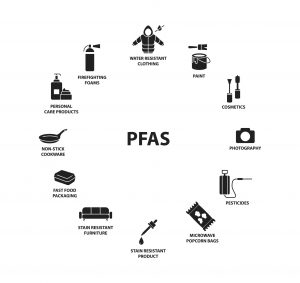Over the past few years, ransomware attacks have increased in frequency and demand size. And, increasingly, those attacks have targeted businesses and critical infrastructure organizations from across the globe. This trend is likely to continue. The Cybersecurity & Infrastructure Security Agency noted that cybersecurity authorities in the United States, Australia and the United Kingdom assess that “if the ransomware criminal business model continues to yield financial returns for ransomware actors, ransomware incidents will become more frequent. Every time a ransom is paid, it confirms the viability and financial attractiveness of the ransomware criminal business model.”
EPA Announces Increased Efforts to Require Cleanup of Coal Ash – Insurance Should Be a Component of Companies’ Response
 Early in 2021, we wrote about potential insurance implications that could arise from the then-new Biden Administration’s expected regulatory priorities. Among other things, we noted that heightened scrutiny on coal ash was expected. On January 11, 2022, the U.S. Environmental Protection Agency (EPA) confirmed that prediction, issuing a press release announcing “key steps” it is taking to “protect groundwater from coal ash contamination.” As companies with coal ash liabilities consider EPA’s new guidance and next steps, they should be aware that they may have insurance that could cover some of their coal ash cleanup costs.
Early in 2021, we wrote about potential insurance implications that could arise from the then-new Biden Administration’s expected regulatory priorities. Among other things, we noted that heightened scrutiny on coal ash was expected. On January 11, 2022, the U.S. Environmental Protection Agency (EPA) confirmed that prediction, issuing a press release announcing “key steps” it is taking to “protect groundwater from coal ash contamination.” As companies with coal ash liabilities consider EPA’s new guidance and next steps, they should be aware that they may have insurance that could cover some of their coal ash cleanup costs.
New York’s Comprehensive Insurance Disclosure Act Introduces Sweeping New Insurance Disclosure Requirements for State Court Litigants
Defendants in New York state court are now subject to some of the most extensive liability insurance disclosure requirements in the nation. On December 31, 2021, Governor Hochul signed into law, effective immediately, the Comprehensive Insurance Disclosure Act, amending New York Civil Practice Law & Rules (CPLR) § 3101(f) to require defendants in civil cases to disclose voluminous and potentially sensitive insurance materials, including applications for insurance policies and information concerning other claims.
In New York Enacts Sweeping New Insurance Disclosure Requirements for State Court Litigants, Joseph D. Jean, Alexander D. Hardiman, Benjamin D. Tievsky, Janine Stanisz, Stephen S. Asay examine the new requirements more closely and present guiding principles for compliance.
SXSW Seeks Resolution of Federal’s Duty to Defend Underlying Ticketholder Class Action Arising from COVID-19 Cancellation
The widespread denial of coverage under first-party property insurance policies for business interruption losses resulting from the COVID-19 pandemic has been extensively reported, but so far less attention has been paid to related third-party claims and attendant coverage issues arising under liability insurance policies. When ticketed attendees sued the organizer of the South by Southwest (SXSW) music and film festival, SXSW LLC, for refunds after the 2020 annual event was cancelled because of the COVID-19 pandemic, the company’s liability insurer, Federal Insurance Company, refused to make good its duty to defend. SXSW has now sued Federal in the U.S. District Court for the Western District of Texas seeking a declaration that Federal owes a duty to defend SXSW against the underlying putative class action, providing insight on COVID-19-related liability coverage issues.
Insurability Update: New York High Court Affirms Coverage for Settlement Amount Labeled “Disgorgement”
 Last month, we discussed a decision by the Northern District of Illinois finding an amount labeled “restitution” in a settlement between a pharmaceutical company and the DOJ was insurable loss under a D&O policy. Shortly after that post, the New York Court of Appeals reached a similar conclusion, continuing the trend of looking beyond the labels used for the payments in the underlying settlement agreement. In rejecting the insurers’ argument, the court evaluated the purpose of the payments and the nature of how they were derived to find the payments at issue were insurable under a Professional Liability policy, despite being called “disgorgement.”
Last month, we discussed a decision by the Northern District of Illinois finding an amount labeled “restitution” in a settlement between a pharmaceutical company and the DOJ was insurable loss under a D&O policy. Shortly after that post, the New York Court of Appeals reached a similar conclusion, continuing the trend of looking beyond the labels used for the payments in the underlying settlement agreement. In rejecting the insurers’ argument, the court evaluated the purpose of the payments and the nature of how they were derived to find the payments at issue were insurable under a Professional Liability policy, despite being called “disgorgement.”
An Update on Recent PFAS Regulation and Enforcement and the Resulting Insurance Implications
 In August, we provided an overview of the recent increase in regulatory and private litigation activity around per- and polyfluoroalkyl substances (PFAS), colloquially known as “forever chemicals,” and potential insurance coverage for PFAS liability. There have been important developments on the PFAS front in the past few months. Companies with any connection to PFAS need to be cognizant of the evolving regulatory landscape and be prepared to defend against potential PFAS liability. Fortunately, insurance coverage may be available to help mitigate these fast-growing claims—including coverage under historic general liability policies.
In August, we provided an overview of the recent increase in regulatory and private litigation activity around per- and polyfluoroalkyl substances (PFAS), colloquially known as “forever chemicals,” and potential insurance coverage for PFAS liability. There have been important developments on the PFAS front in the past few months. Companies with any connection to PFAS need to be cognizant of the evolving regulatory landscape and be prepared to defend against potential PFAS liability. Fortunately, insurance coverage may be available to help mitigate these fast-growing claims—including coverage under historic general liability policies.
The Benefits of Mediating Complex Insurance Claims in a Post-Pandemic World

In my December 18, 2017, blog post, I wrote about “choosing the right path” to settle complex insurance claims and emphasized the benefits of private structured negotiation, a type of negotiation undertaken without the assistance of mediators. At that time, I identified mediation as “a good potential next step.” Since 2017, the world has suffered through a pandemic, and it has become apparent to me that private settlement discussions can sometimes become discoverable in litigation, even if compromise communications are not permitted in evidence. In the wake of these developments, what I previously counseled as a good potential second step is now in my view the proper first step in most cases. Notwithstanding, while mediation has many benefits, its efficacy depends on identifying the right mediator, selecting the right timing and format (now, likely virtual), and making sure that any settlement reached in mediation does not later unravel.
In Another Blow to the “Uninsurability” Defense, Court Holds that Settlement Labeled “Restitution” Is Insurable
 In previous posts, we have emphasized the continued judicial trend rejecting insurer arguments that losses purportedly sounding in restitution or disgorgement are “uninsurable” under D&O policies. Despite that trend, insurers continue to invoke “uninsurability” under state law or vague notions of public policy, even where such a doctrine has not been recognized in the relevant jurisdiction.
In previous posts, we have emphasized the continued judicial trend rejecting insurer arguments that losses purportedly sounding in restitution or disgorgement are “uninsurable” under D&O policies. Despite that trend, insurers continue to invoke “uninsurability” under state law or vague notions of public policy, even where such a doctrine has not been recognized in the relevant jurisdiction.
Biometric Privacy, BIPA and the Battle for EPLI Policy Coverage
 Do employees have a privacy right in the shape of their faces, the color of their eyes, or the texture of their fingertips? In many states, the law now says yes—leading employers to ask: Are resulting biometric privacy claims covered under their existing policies, or is insurance otherwise available?
Do employees have a privacy right in the shape of their faces, the color of their eyes, or the texture of their fingertips? In many states, the law now says yes—leading employers to ask: Are resulting biometric privacy claims covered under their existing policies, or is insurance otherwise available?
Federal Court Holds Allegations of Coronavirus on Premises Sufficiently Allege Physical Loss of or Damage to Property

Judge Catherine C. Eagles of the U.S. District Court for the Middle District of North Carolina made the right call by allowing a large hospital system policyholder to litigate the merits of its COVID-19 business interruption claim to recovery where so many others have had that door improperly and prematurely shut by other federal courts recently.




